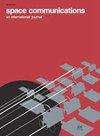The ANASTASIA project: A contribution to the definition of a future aeronautical communication system
引用次数: 0
Abstract
Project objectives: The core of ANASTASIA (Airborne New Advanced Satellite Techniques & Technologies in a System Integrated Approach) research is to provide on-board Communication, Navigation and Surveillance (CNS) solutions to cope with the foreseen doubling of air traffic by 2020. ANASTASIA will carry out research of future technology and system architectures for navigation, resulting in the development of a new generation of airborne Global Navigation Satellite System (GNSS) receivers for all phases of flight. Such systems will offer accurate and safe global navigation while reducing avionics cost through the optimisation of the number and complexity of on board equipment. On the communication side, work will concentrate on the design and implementation of a prototype Satcom system that will meet the evolving European Air Traffic Management (ATM) requirements. Research will also be made into higher bandwidth services, systems and airborne equipment to efficiently meet long term future aircraft communication requirements, including both ATM and passenger needs. The future needs of Surveillance will be consolidated with the requirements and key technology tests from Communications and Navigation. Expected results: The main goal of ANASTASIA is to pave the way for the introduction of new satellite-based technologies into aircraft operations in both Navigation and Communications. The main outcome of ANASTASIA will be recommendations for future civil aircraft operation and a set of evaluated technologies and avionics architectures achievable from 2010 that will enable more autonomous, satellite-based aircraft operation. Paper focus: After a general description of the rationale of the project and of its global CNS objectives, the focus is made in this paper on the communication side where more detailed objectives and initial results are presented.ANASTASIA项目:对未来航空通信系统定义的贡献
项目目标:ANASTASIA(机载新型先进卫星技术与系统集成方法)研究的核心是提供机载通信、导航和监视(CNS)解决方案,以应对预计到2020年空中交通量翻倍的情况。ANASTASIA将开展未来导航技术和系统架构的研究,从而开发新一代机载全球导航卫星系统(GNSS)接收机,用于飞行的所有阶段。这种系统将提供准确和安全的全球导航,同时通过优化机载设备的数量和复杂性来降低航空电子设备的成本。在通信方面,工作将集中于设计和实现一个原型卫星通信系统,该系统将满足不断发展的欧洲空中交通管理(ATM)要求。还将研究更高带宽的服务、系统和机载设备,以有效地满足未来飞机通信的长期需求,包括ATM和乘客的需求。未来的监视需求将与通信和导航的需求和关键技术测试相结合。预期结果:ANASTASIA的主要目标是为在导航和通信方面将新的卫星技术引入飞机操作铺平道路。ANASTASIA的主要成果将是对未来民用飞机运行的建议,以及从2010年开始可实现的一套评估技术和航空电子架构,这将使更多的自主、基于卫星的飞机运行。论文重点:在对项目的基本原理及其全球CNS目标进行一般描述后,本文将重点放在沟通方面,其中提出了更详细的目标和初步结果。
本文章由计算机程序翻译,如有差异,请以英文原文为准。
求助全文
约1分钟内获得全文
求助全文

 求助内容:
求助内容: 应助结果提醒方式:
应助结果提醒方式:


